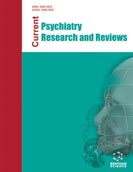Abstract
Background: Clinical features and treatment response in catatonia is unpredictable and needs to be studied further.
Objective: The aim of this research is to study clinical presentations of catatonia and its response to various modalities of treatment.
Methods: This study recruited 50 patients in the age group of 15-65 years, with a diagnosis of catatonia as per DSM 5 criteria, selected by a stepwise process of sample selection. Patients with significant medical or surgical illness warranting immediate intervention were excluded. A detailed history and clinical information was obtained following informed consent from patient’s caregivers and other significant relatives. Rating on the severity of symptoms as well as treatment response was done using the Bush-Francis Catatonia Rating Scale (BFCRS) on 1st, 3rd, 7th, and 14th day of admission. Modified Electro-Convulsive Therapy (MECT) was administered to patients who had an inadequate response to intravenous lorazepam.
Results: It was found that 32 (64%) patients had a psychotic disorder, and 18 (36%) patients had mood disorders as an underlying diagnosis in catatonic presentation. Mutism was the most common catatonic sign-on rating with BFCRS, found in 50 (100%) of the patients. Complete resolution of catatonia was observed in 26 (52%) of patients following the use of intravenous lorazepam, while 24 (48%) required MECT. Patients with a diagnosis of schizophrenia required higher doses of intravenous lorazepam (p=0.001) and showed a lesser response to intravenous lorazepam compared to patients with diagnoses of mood disorders and other psychotic disorders.
Conclusion: Most common diagnosis in patients of catatonia was found to be psychotic disorder. Retarded signs of catatonia were found to be the commonest presentation. MECT was required to achieve resolution of catatonic symptoms in around half (48%) of the cases. The patients with diagnoses of schizophrenia required higher doses and also showed a lesser response to intravenous lorazepam, hence MECT was required in a higher proportion of such cases.
Keywords: Catatonia, schizophrenia, electro convulsive therapy, intravenous lorazepam, mood disorders, mutism, staring.
[PMID: 13681226]
[http://dx.doi.org/10.1016/S0010-440X(66)80024-X]
[http://dx.doi.org/10.1176/ajp.131.6.674] [PMID: 4597303]
[http://dx.doi.org/10.1053/comp.2002.32352] [PMID: 11994832]
[http://dx.doi.org/10.1001/archpsyc.1976.01770040068012] [PMID: 938187]
[http://dx.doi.org/10.5498/wjp.v6.i4.391] [PMID: 28078203]
[http://dx.doi.org/10.1001/archpsyc.1976.01770050043006] [PMID: 1267574]
[PMID: 21743713]
[PMID: 21455353]
[http://dx.doi.org/10.1080/10401230701844786] [PMID: 18297580]
[http://dx.doi.org/10.4103/0019-5545.75559] [PMID: 21431006]
[http://dx.doi.org/10.4103/0972-6748.123612] [PMID: 24459371]
[http://dx.doi.org/10.1017/S0033291705005453] [PMID: 16219124]
[http://dx.doi.org/10.1176/jnp.23.2.jnp223] [PMID: 21677256]
[http://dx.doi.org/10.1001/archpsyc.1977.01770220105012] [PMID: 911221]
[PMID: 11941166]
[http://dx.doi.org/10.1097/00004714-199002000-00024] [PMID: 2307736]
[PMID: 2211547]
[http://dx.doi.org/10.2190/X0FF-VU7G-QQP7-L5V7] [PMID: 8822386]
[http://dx.doi.org/10.1159/000284798] [PMID: 8511229]
[http://dx.doi.org/10.1007/s002130050904] [PMID: 10229064]
[http://dx.doi.org/10.1097/YCT.0b013e3182887a1a] [PMID: 23965606]
[http://dx.doi.org/10.1111/j.1600-0447.1996.tb09814.x] [PMID: 8686483]
[http://dx.doi.org/10.1016/j.psym.2015.12.007] [PMID: 26949118]
[http://dx.doi.org/10.4103/0976-500X.142449] [PMID: 25422571]
[http://dx.doi.org/10.4088/PCC.09l00790ecr]]
[http://dx.doi.org/10.3109/10401230009147094] [PMID: 10907800]













